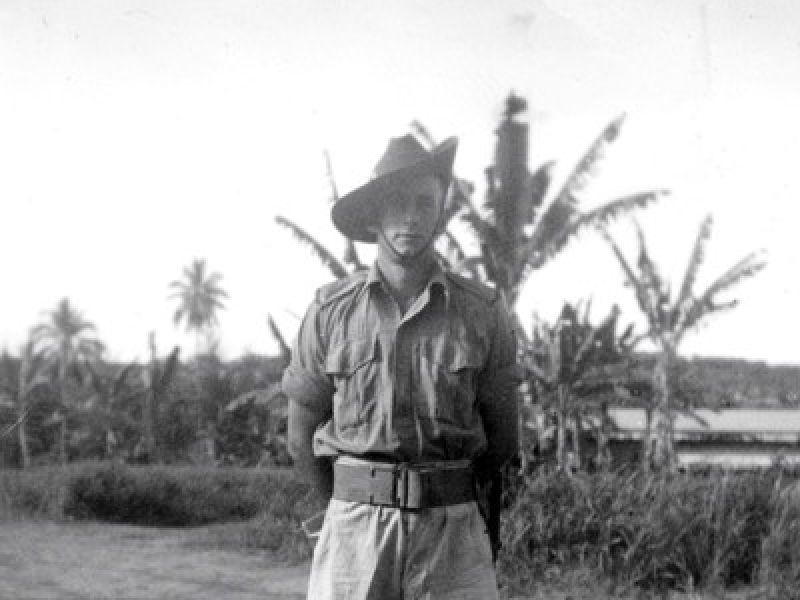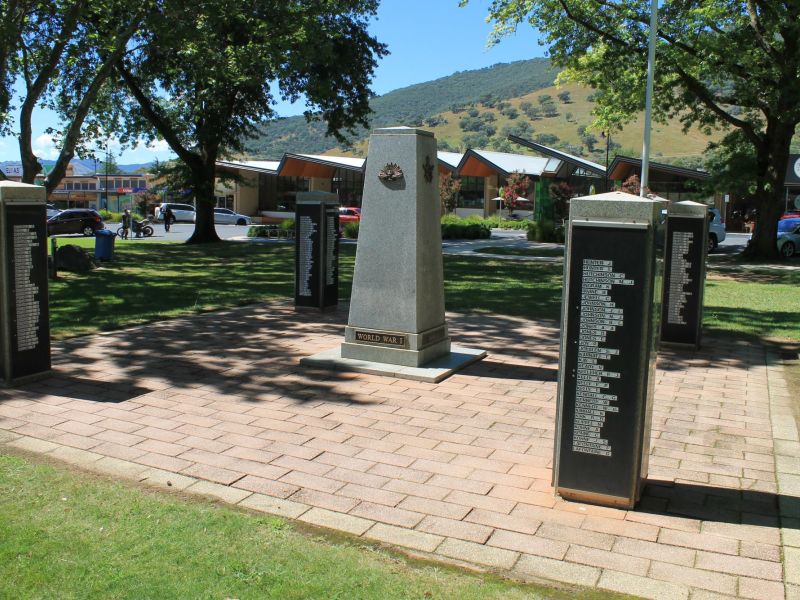John Alfred Benjamin Seessle
John was born on the 5th of May, 1914 at Auburn, New South Wales, to Johann Alfred and Emma Bridget (née Nelson) Sessle. Johann changed his Christian name to John to enable him to enlist in the 1st AIF in 1916 at the age of 30. He was declared medically unfit due to heart problems. It’s not sure how many siblings John junior had. Newspaper reports during the 1920’s indicate that his parent’s marriage was not a happy one.
Australian Electoral rolls state that John junior lived at 744 Elizabeth St, Carlton South in 1936 but by the following year he had moved to Granya in the Upper Murray. In both cases his occupation was listed as “miner”.
The Thursday 9th of July 1936 edition of the Upper Murray and Mitta Herald contains a notice of an application for a mining lease. John was going into partnership with Francis Thomas Martin and applied for a lease of 40 acres to operate a gold mine which they named the Burning Stump mine. There are no records to indicate how successful John’s mining venture was.
John enlisted at Albury on the 16th of May, 1940. He stated that his occupation was a 26 year old, single, internal combustion engineer. He listed his mother, Bridget, as his next of kin. By this time she was living at 69 Great Brickingham St, Redfern, Sydney. John was allocated the Army No. VX19468 and and taken on strength at the Rural Recruit Depot at Caulfield in Victoria.
After six weeks of basic training he was posted to the 2/22nd Infantry Battalion which, at that time, was based at Trawool in central Victoria. On the 6th of August John went absent without leave (AWL) for one day, although, according to his records, he did not receive any punishment. The 2/22nd moved to Bonegilla on the 24th of September making the 235 kilometre journey on foot and arriving at their new training area on the 4th of October. A second period of John being AWL occured on the 29th of December, however it is difficult to interpret the length of his absence. John went AWL for a third time, from 0900 hours on the 3rd of January to 1200 hours on the 5th. This time he was fined 10/- (shillings) with a loss of three days pay.
The battalion embarked on HMAT Zealandia on the 18th of April at Sydney, disembarking at Rabaul, New Britain on the 26th of April, 1941. The battalion combined with the local unit of New Guinea Volunteer Rifles, a coastal defence battery, an anti-aircraft battery and elements of the 2/10th Field Ambulance and 17th Anti-tank Battery to form Lark Force. Its role was to protect airfields at Lakunai and Vunakanau, and the seaplane base at Rabaul. Like the other “bird forces”, Gull Force on Ambon and Sparrow Force on Timor, they were ill-equipped and unsupported by the Australian Government.
Following the successful attack by the Japanese over the previous few weeks, the order “every man for himself” was given by Lieutenant Colonel John Scanlan, the commanding officer of Lark force, on the 23rd of January. Members of Lark Force and some civilians retreated south, either alone or in small parties. After crossing the Bainings Mountains some groups decided to head towards Tol and Waitavalo on the southern side of the Gazelle Peninsula. On the 3rd of February, 1942, as the groups arrived at the Tol Plantation, five barge loads of Japanese troops were waiting for them. The Japanese captured a number of men as they tried to escape from the plantation. Others were captured when they were unable to cross the rivers in the area around Henry Reid Bay. The men were now prisoners of war. They were forced to surrender all of their personal belongings and were tied together in groups of nine or ten. They were then asked in sign language by the Japanese whether they preferred to shot or bayoneted. The groups were taken into the jungle where they were shot, bayoneted or burnt alive. Approximately 160 prisoners were massacred, 115 being soldiers. One of them being Private John Alfred Benjamin Seessle. Miraculously, six men managed to survive the massacre and made it back to Australia.
Of the 1400 members of Lark Force, only around 400 managed to return to Australia. 300 of these were members of the 2/22nd.
John has no known grave. He is remembered on the Australian War Memorial Roll of Honour, the Rabaul Memorial and the Tallangatta RSL War Memorial. For his service, he was awarded the 1939-1945 Star, the Pacific Star, the Defence Medal, the War Medal 1939-1945 and the Australian Service Medal 1939-1945.

 Stephen Learmonth
Stephen Learmonth